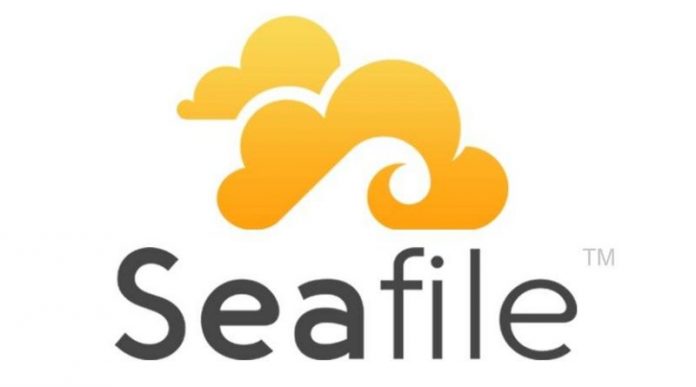Introduction
Seafile is a private file hosting platform, similar to Dropbox, Google Drive, OneDrive and Mega. Its parts are released under open source licenses, in particular:
- Seafile iOS client: Apache License v2
- Seafile Android client: GPLv3
- Desktop syncing client: GPLv2
- Seafile Server core: AGPLv3
- Seahub (Seafile server Web UI): Apache License v2
It supports file encryption and group sharing.
This tutorial explains how to install Seafile on CentOS 7 with NGINX as your web server and MariaDB as your database.
Getting started
First of all, Seafile is written in Python, so it requires the following dependencies:
# yum install python-imaging MySQL-python python-memcached python-ldap python-urllib3
Install and configure MariaDB
Install MariaDB; available on EPEL:
# yum install epel-release
then:
# yum install mariadb mariadb-server
At the end of this process, start the program and configure the MariaDB root account, executing:
# systemctl start mysqld
and
# mysql_secure_installation
Set root password? [Y/n] New password: Re-enter new password: Remove anonymous users? [Y/n] Disallow root login remotely? [Y/n] Remove test database and access to it? [Y/n] Reload privilege tables now? [Y/n]
Seafile requires three different databases (one for each component) :
- ccnet-db
- seafile-db
- seahub-db
So, create these databases and a user,
:
# mysql -u root -p
In the MariaDB shell:
mysql> CREATE DATABASE ccnet-db CHARACTER SET = 'utf8'; mysql> CREATE DATABASE seafile-db CHARACTER SET = 'utf8'; mysql> CREATE DATABASE seahub-db CHARACTER SET = 'utf8'; mysql> CREATE USER 'seauser'@'localhost' IDENTIFIED BY 'user_strong_password'; mysql> GRANT ALL PRIVILEGES ON ccnet-db TO seauser@localhost IDENTIFIED BY 'user_strong_password'; mysql> GRANT ALL PRIVILEGES ON seafile-db TO seauser@localhost IDENTIFIED BY 'user_strong_password'; mysql> GRANT ALL PRIVILEGES ON seahub-db TO seauser@localhost IDENTIFIED BY 'user_strong_password'; mysql> FLUSH PRIVILEGES; mysql> EXIT;
Install NGINX
Since the EPEL repository is available, it’s possible to install NGINX with yum:
# yum install nginx
Start it with systemd:
# systemctl start nginx.service
Create a user and a group, both named
:
# adduser --user-group --system --no-create-home nginx
Install and configure Seafile
Create a new directory:
# mkdir /var/www/seafile # cd /var/www/seafile
There, download Seafile with
:
# wget https://bintray.com/artifact/download/seafile-org/seafile/seafile-server_6.0.8_x86-64.tar.gz
Extract the archive:
# tar xf seafile-server_6.0.8_x86-64.tar.gz
Rename the extracted directory:
# mv seafile-server-6.0.8 seafile-server # cd seafile-server
There is a script, named
in order to configure the database, execute it:
# ./setup-seafile-mysql.sh
It will ask for some information:
- server name: myserver
- server ip or domain: localhost
- seafile data dir: press Enter, and it will use the current directory
- fileserver port: Enter, and it should use 8082
Next, it will display the following:
------------------------------------------------------- Please choose a way to initialize Seafile databases: ------------------------------------------------------- [1] Create new ccnet/seafile/seahub databases [2] Use existing ccnet/seafile/seahub databases
Chose option 2, and then:
- use deafult host: localhost
- default port: 3306
- mysql user: ‘seauser’
- password for Seafile mysql user: ‘user_strong_password’
- ccnet database: ‘ccnet-db’
- seafile database: ‘seafile-db’
- seahub database: ‘seahub-db’
Next, the script will create required tables for Seafile.
Start Seafile and Seahub:
# ./seafile.sh start # ./seahub.sh start
During execution, seahub.sh will ask for admin informations, particularly your email and password.
After this, Seafile will be running and it will be possible to access it with a web browser, at localhost:8000.
Next, you’ll need to configure NGINX as the reverse proxy. But first, it’s necessary to create a systemd service.
Configuring services
Change the Seafile installation directory and cache owner to user
:
# chown -R nginx:nginx /var/www/* # chown -R nginx:nginx /tmp/seahub_cache
Then create a service:
# $EDITOR /etc/systemd/system/seafile.service
In this file, paste the following configuration:
[Unit] Description=Seafile - the open source, self-hosted file sync Before=seahub.service After=network.target mariadb.service [Service] Type=oneshot ExecStart=/var/www/seafile/seafile-server/seafile.sh start ExecStop=/var/www/seafile/seafile-server/seafile.sh stop RemainAfterExit=yes User=nginx Group=nginx [Install] WantedBy=multi-user.target
Save, exit and do the same with SeaHub:
# $EDITOR /etc/systemd/system/seahub.service
and paste:
[Unit] Description=SeaHub After=network.target seafile.target mariadb.service [Service] Type=oneshot ExecStart=/var/www/seafile/seafile-server/seahub.sh start-fastcgi ExecStop=/var/www/seafile/seafile-server/seahub.sh stop RemainAfterExit=yes User=nginx Group=nginx [Install] WantedBy=multi-user.target
Save, exit and then:
# systemctl daemon-reload # systemctl start seafile # systemctl start seahub
Configure NGINX
Seafile is correctly running, now configure NGINX for running Seafile behind it. Create a new Virtual Host file:
# $EDITOR /etc/nginx/conf.d/seafile.conf
and there:
<span class="hljs-section">server</span> {
<span class="hljs-attribute">listen</span> <span class="hljs-number">80</span>;
<span class="hljs-attribute">server_name</span> seafile.mydomain.com;
<span class="hljs-attribute">proxy_set_header</span> X-Forwarded-For <span class="hljs-variable">$remote_addr</span>;
<span class="hljs-attribute">location</span> / {
<span class="hljs-attribute">fastcgi_pass</span> <span class="hljs-number">127.0.0.1:8000</span>;
<span class="hljs-attribute">fastcgi_param</span> SCRIPT_FILENAME <span class="hljs-variable">$document_root</span><span class="hljs-variable">$fastcgi_script_name</span>;
<span class="hljs-attribute">fastcgi_param</span> PATH_INFO <span class="hljs-variable">$fastcgi_script_name</span>;
<span class="hljs-attribute">fastcgi_param</span> SERVER_PROTOCOL <span class="hljs-variable">$server_protocol</span>;
<span class="hljs-attribute">fastcgi_param</span> QUERY_STRING <span class="hljs-variable">$query_string</span>;
<span class="hljs-attribute">fastcgi_param</span> REQUEST_METHOD <span class="hljs-variable">$request_method</span>;
<span class="hljs-attribute">fastcgi_param</span> CONTENT_TYPE <span class="hljs-variable">$content_type</span>;
<span class="hljs-attribute">fastcgi_param</span> CONTENT_LENGTH <span class="hljs-variable">$content_length</span>;
<span class="hljs-attribute">fastcgi_param</span> SERVER_ADDR <span class="hljs-variable">$server_addr</span>;
<span class="hljs-attribute">fastcgi_param</span> SERVER_PORT <span class="hljs-variable">$server_port</span>;
<span class="hljs-attribute">fastcgi_param</span> SERVER_NAME <span class="hljs-variable">$server_name</span>;
<span class="hljs-attribute">fastcgi_param</span> REMOTE_ADDR <span class="hljs-variable">$remote_addr</span>;
<span class="hljs-attribute">access_log</span> /var/log/nginx/seahub.access.log;
<span class="hljs-attribute">error_log</span> /var/log/nginx/seahub.<span class="hljs-literal">error</span>.log;
<span class="hljs-attribute">fastcgi_read_timeout</span> <span class="hljs-number">36000</span>;
}
<span class="hljs-attribute">location</span> /seafhttp {
<span class="hljs-attribute">rewrite</span><span class="hljs-regexp"> ^/seafhttp(.*)$</span> <span class="hljs-variable">$1</span> <span class="hljs-literal">break</span>;
<span class="hljs-attribute">proxy_pass</span> http://127.0.0.1:8082;
<span class="hljs-attribute">client_max_body_size</span> <span class="hljs-number">0</span>;
<span class="hljs-attribute">proxy_connect_timeout</span> <span class="hljs-number">36000s</span>;
<span class="hljs-attribute">proxy_read_timeout</span> <span class="hljs-number">36000s</span>;
<span class="hljs-attribute">proxy_send_timeout</span> <span class="hljs-number">36000s</span>;
<span class="hljs-attribute">send_timeout</span> <span class="hljs-number">36000s</span>;
}
<span class="hljs-attribute">location</span> /media {
<span class="hljs-attribute">root</span> /path/to/your/directory;
}
}
Save, exit and test NGINX, like this:
# nginx -t
Configure domain in ccnet.conf and seahub_setting.py
Modify the value of
in ccnet.conf to let Seafile know the domain, protocol and port chosen:
# $EDITOR /var/www/seafile/conf/ccnet.conf
and make the change:
SERVICE_URL = http://seafile.mydomain.com
Save, exit and edit SeaHub configuration file:
# $EDITOR /var/www/seafile/conf/seahub_setting.py
There:
# FILE_SERVER_ROOT = 'http://seafile.mydomain.com/seafhttp'
Save, exit and restart services:
# systemctl restart seafile # systemctl restart seahub
Test Seafile
With a web browser, go to URL: http://seafile.mydomain.com; it will show a login form in which you can enter the admin account info you previously created. That’s all! Now you can use Seafile like any other cloud storage system!





